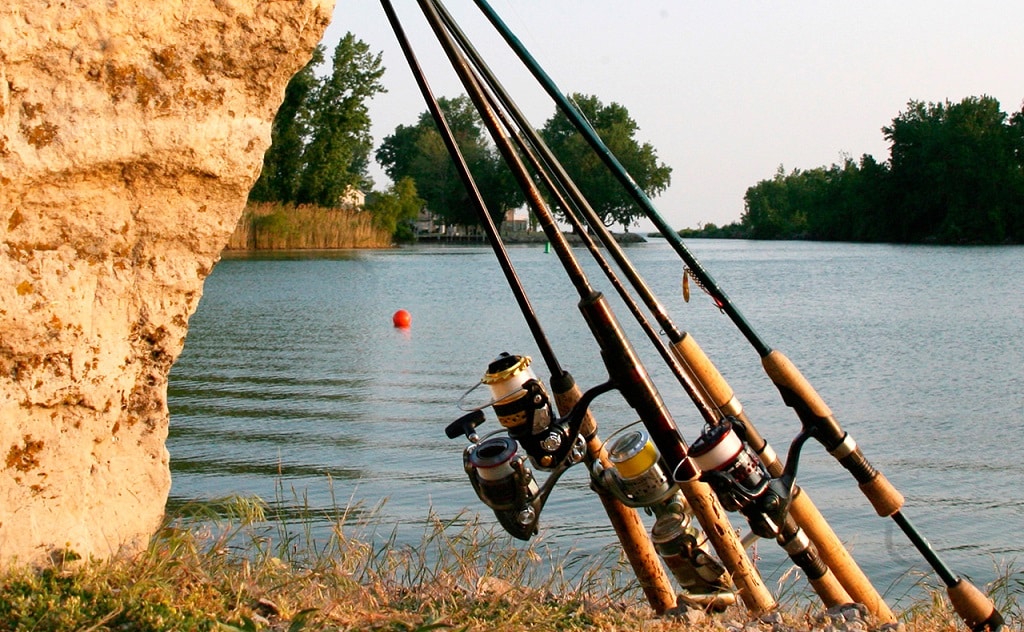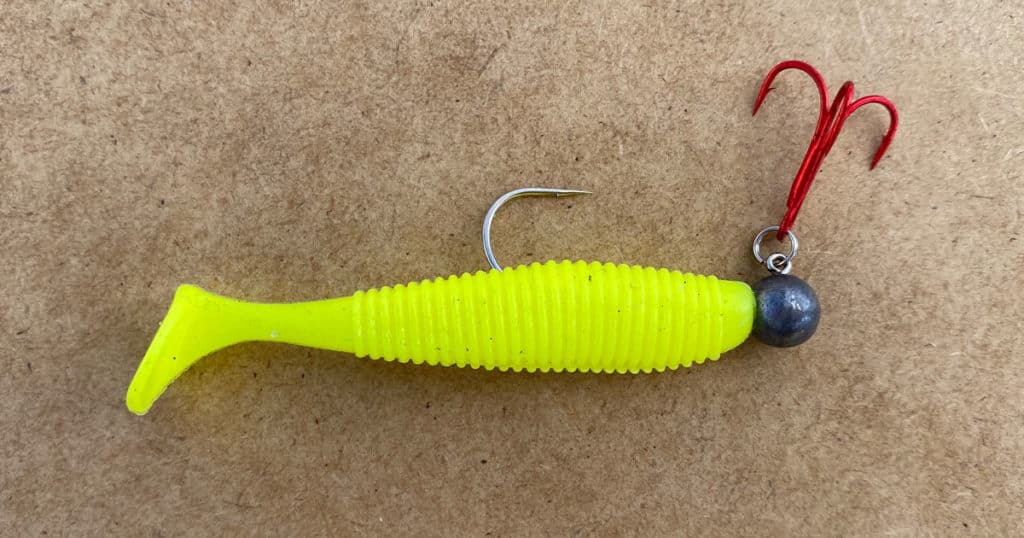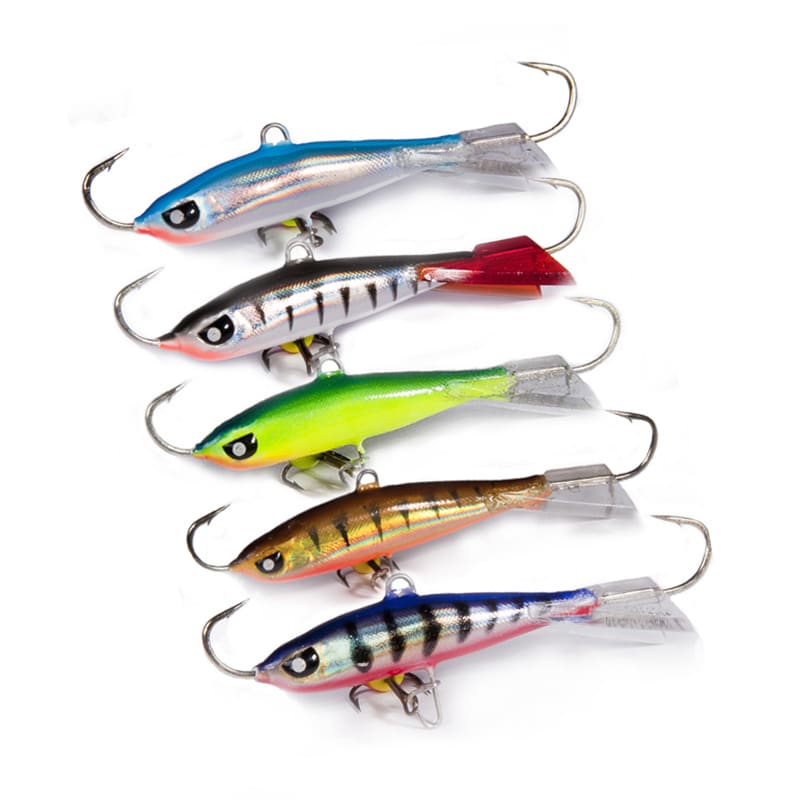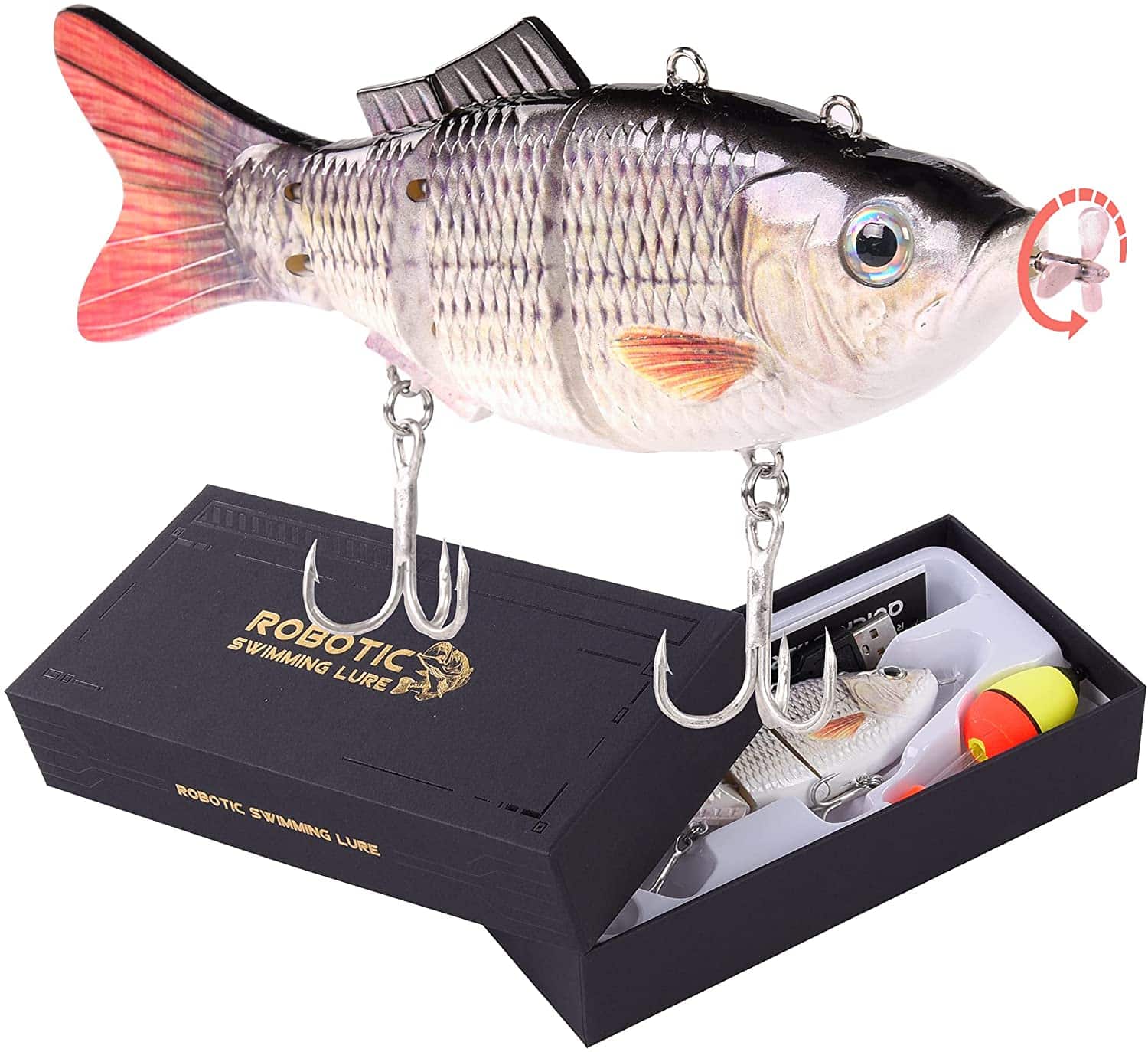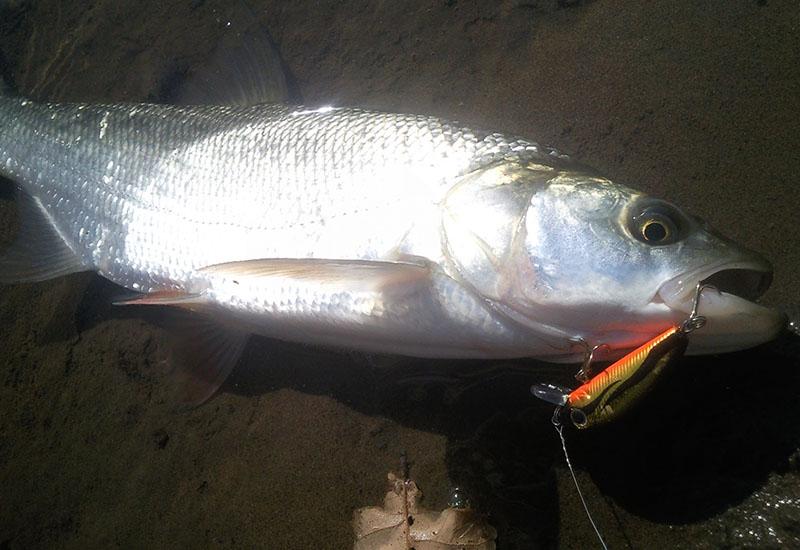Many anglers, when using tackle such as
spinning, practice such a direction of catching predatory fish as jig. For this, special jig rigs are used, which allow you to successfully catch even large fish weighing more than 10 kg or more. As a rule, fishing for predatory fish using jig lures is practiced in those areas of water bodies where there are great depths, at the same time, non-catching jigs can be used where there is an abundant accumulation of algae, snags and other natural underwater obstacles and shelters behind which it can hide predatory fish. In addition, jig tackle allows you to fish quite successfully at a considerable distance from the coastline of the reservoir and near the so-called coastal and channel edges.
- Features of jig equipment, what options are there – how it looks from the photo and description
- Varieties of mounting a vibrotail and other jig baits
- Petty tyrant
- Texas
- Carolina rig
- Offset montages
- Front hook
- Rigging with wobblers or floats
- Drifting (bottom) gear
- Installation of different jig lures – how to attach and tie a lure on a jig head, hook, double
- Selection of tackle for using a jig
- Поделиться ссылкой:
Features of jig equipment, what options are there – how it looks from the photo and description
The classic, most common version of jig equipment is the combined use of a sinker and any bait, most often silicone. The weight installed on the bait allows the angler to deliver it to the fishing site on the pond and more successfully carry out stepwise guidance.
Interesting! The jig head allows you to tap the bottom and explore the depth at the fishing spot.
The advantage of jig lures is that in terms of the level and nature of their play in the water, they are very similar in appearance to fry and small fish, which are actively hunted by predators. Due to the fact that such artificial baits are, as a rule, soft, predatory fish swallows them almost immediately after an attack. However, there are some drawbacks to this rig. If you compare it with the hinges, then the classic jig rig has less freedom of action. Also, mounting on a rigid hitch sails more than spaced rigs, so it will be problematic to use it for fishing at a considerable distance from the shoreline of the reservoir.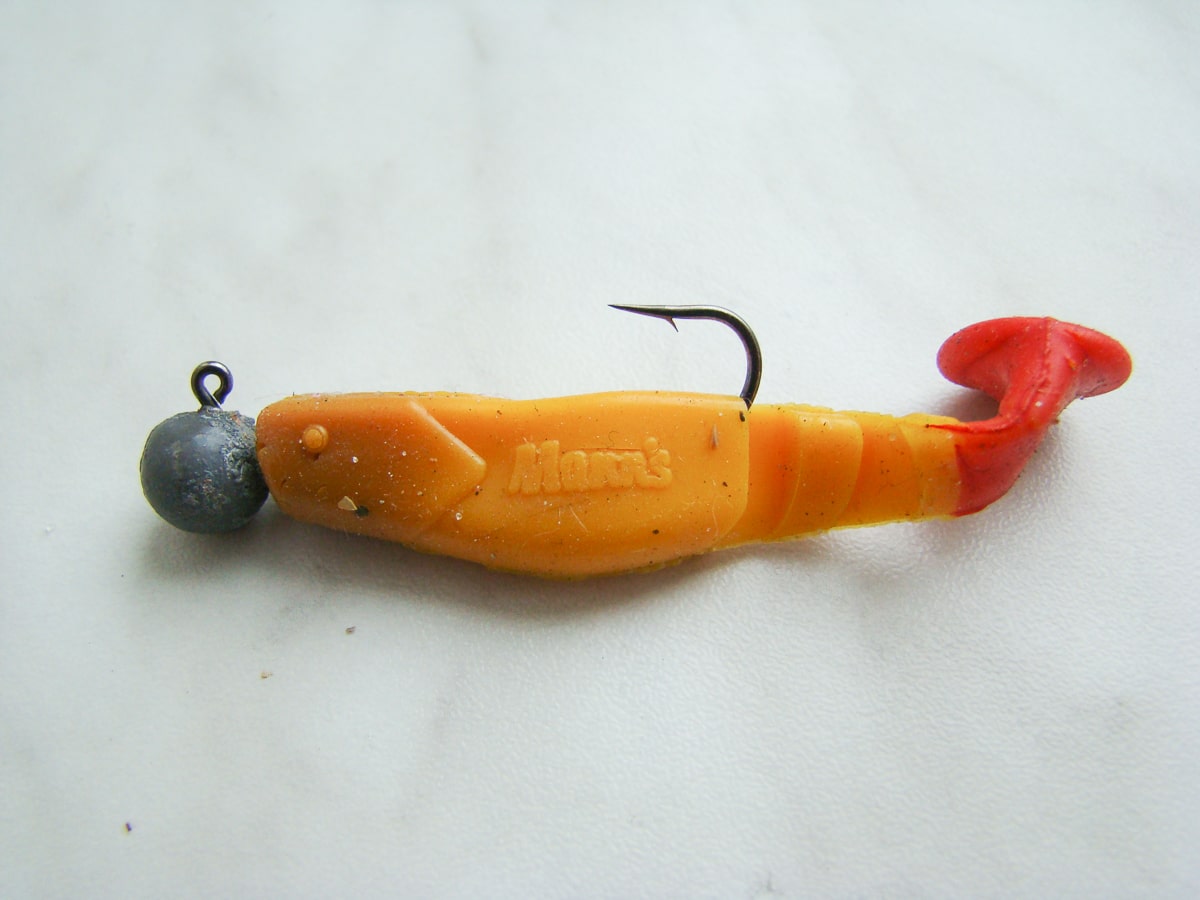
What to choose is a difficult question and, by and large, an open question. One thing can be said – for passive fish, it is better to use passive baits on lazy lines, on active fish – active jig lures on ragged animations.
However, regardless of the type, such baits can be actively used to catch predatory fish species (and microjig and peaceful fish) throughout the year.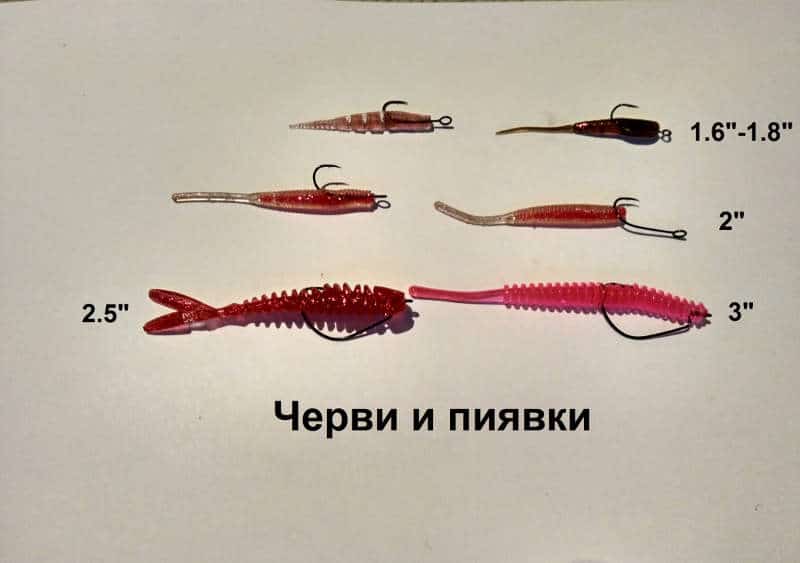
Varieties of mounting a vibrotail and other jig baits
There are several types of jig mounting. Depending on the type of installation and the load used, such equipment is of the following varieties:
- Petty tyrant.

- Texas.
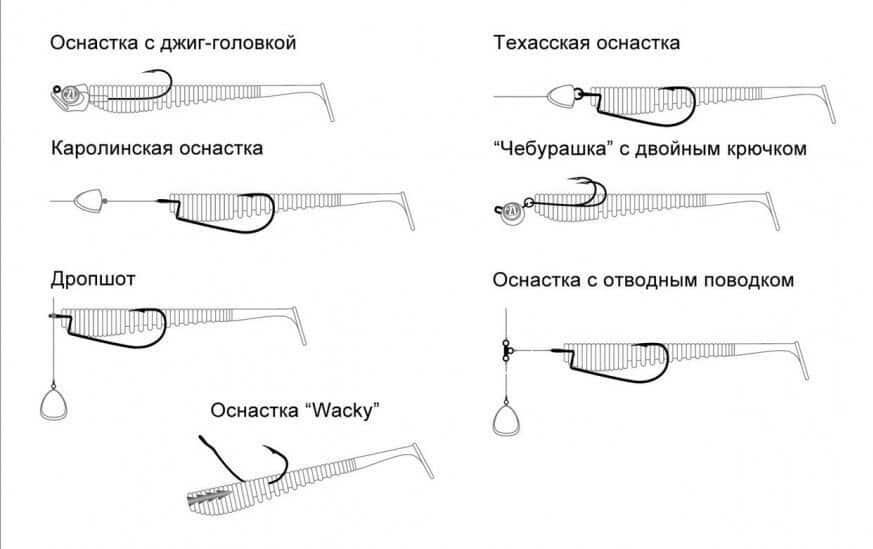
- Equipment with wobblers or floats.
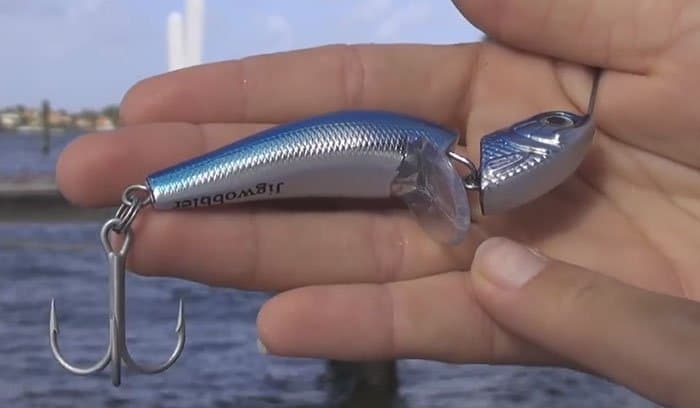
- Jig spinner.
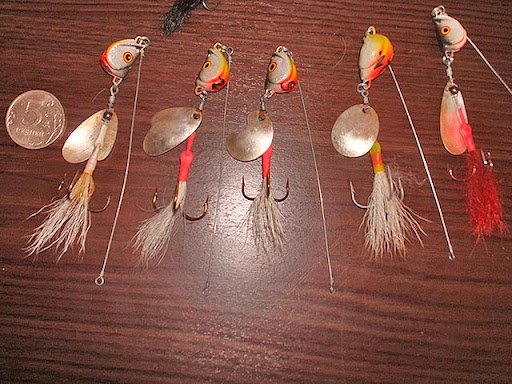
- Caroline.
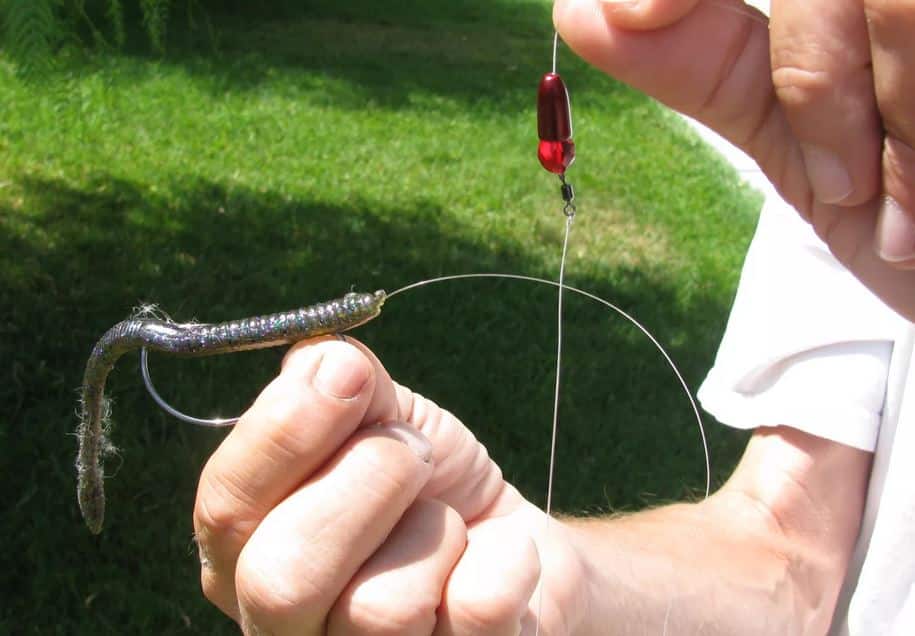
- Offset editing.
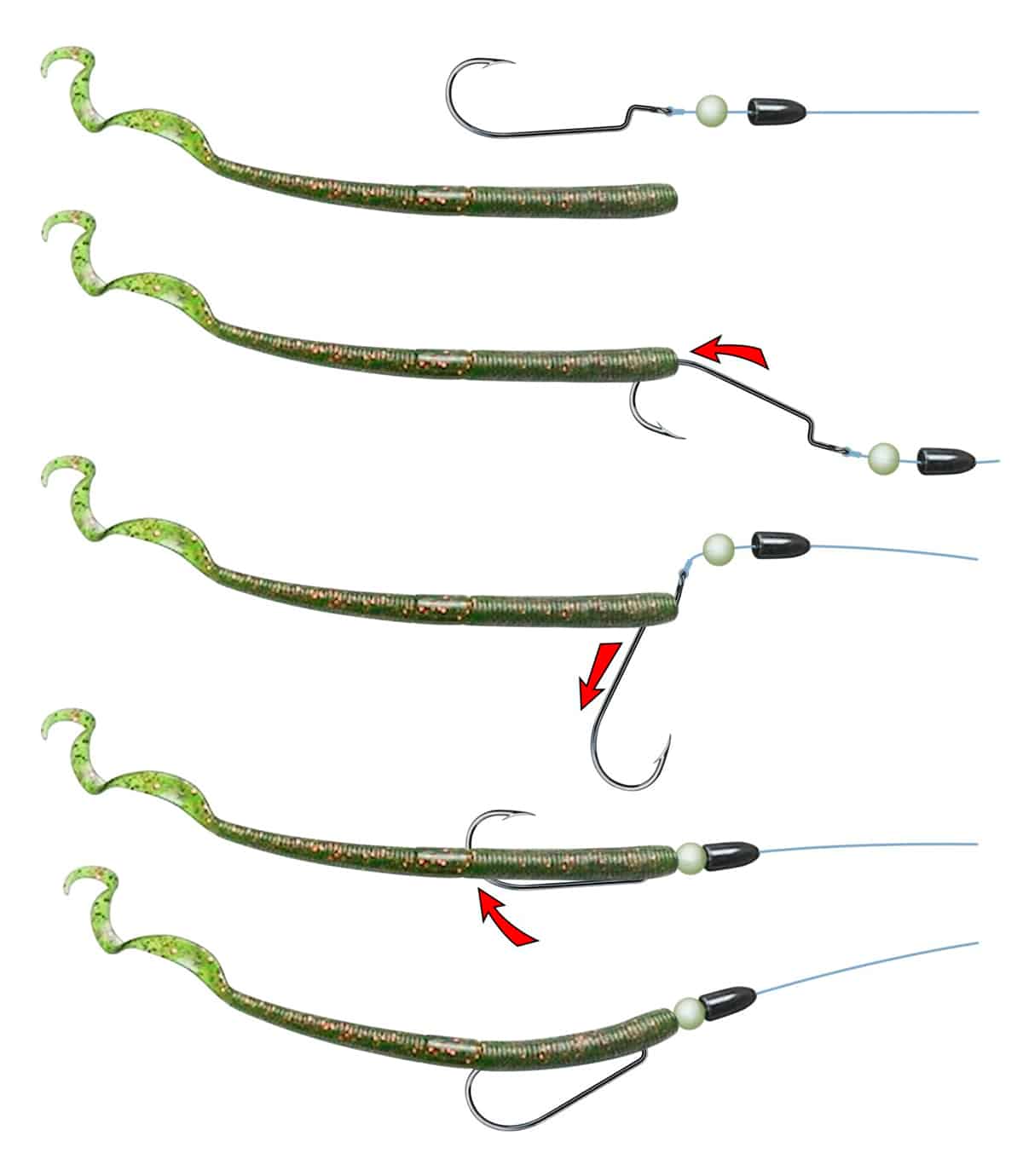
- The bottom (drifting) rig on the parrying head is a classic.
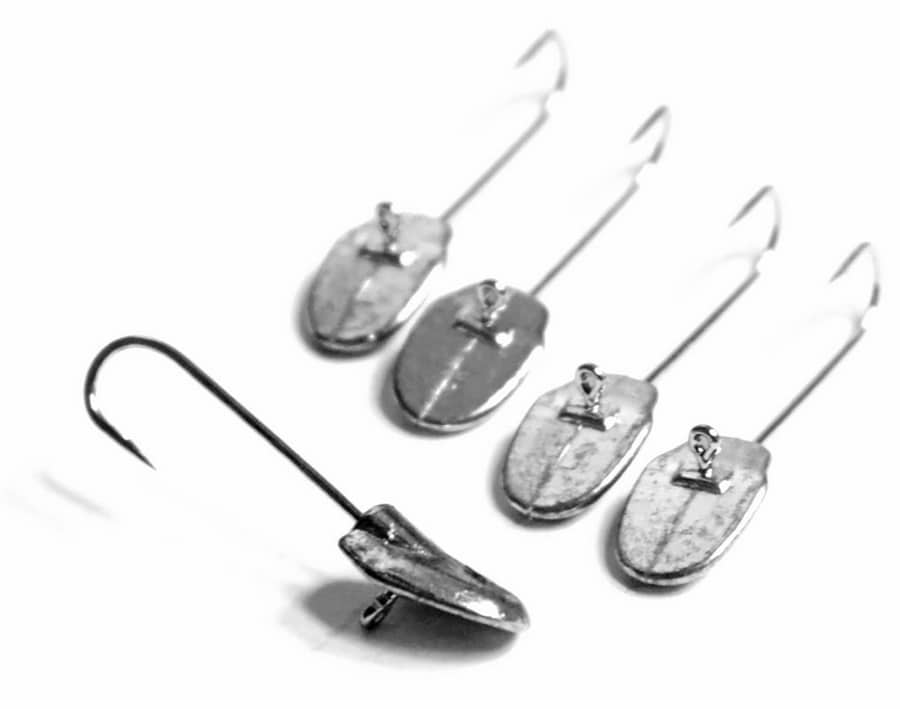
- With front hook.
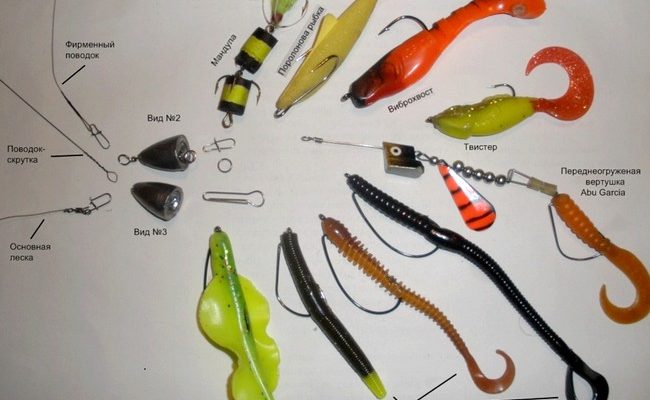
Each of these types of jig mounting has both its own advantages and certain disadvantages. In addition, to catch a certain type of predatory fish, you should select each type of rig and jig bait separately.
Petty tyrant
The equipment called “Samodur” allows you to successfully catch fish while carrying out uneven postings. It consists of a small rod or reel, which is equipped with a special collar, as well as a leash. In addition, there is a weight on the rod along with the hooks. By and large, tyrant can only be conditionally called jig equipment. In fact, it looks more like a bottom tackle for catching predatory fish. The tyrant is suitable for catching a goby, horse mackerel, sabrefish, mackerel, herring. In general, this tackle is usually used for catching sea fish in a plumb line. In some cases, it can be used to catch fish such as perch. The tyrant is best used for fishing at great depths from a boat.
Texas
A rig called
Texas is a special weight made in the shape of a bullet. Its rear part is equipped with a small recess in which the eyelet of the offset hook installed on the bait is located. As a rule, such a load is equipped with silicone baits, which are made in the form of worms.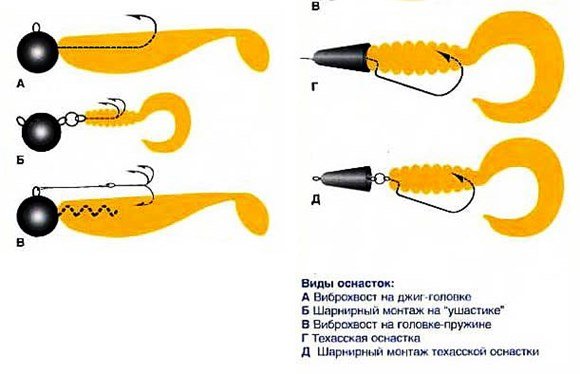
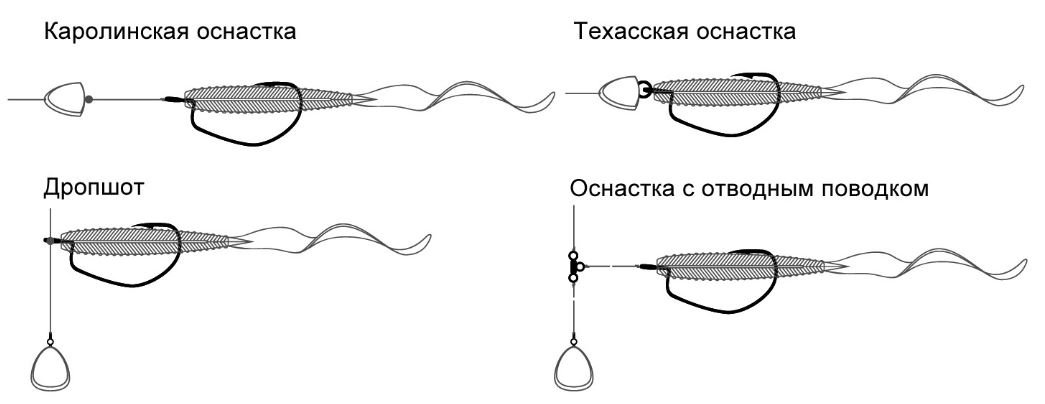
Important! It is recommended to equip the Texas rig with a small load. This is due to the fact that otherwise, when using too heavy, massive load, the used bait will instantly fall after casting to the bottom of the reservoir.
Carolina rig
As a rule,
such equipment is used to catch passive, inactive fish. It is very similar in design to a rig called Texas. However, this tackle, compared to Texas, has a different distance between the bullet and the load. This type of rig like Carolina is classified as spaced. The distance from the used load to the installed bait can be from 0.4 to 1 m.Thanks to this, after the bait is thrown into the water, the load, during the posting, will constantly drag along the bottom, thereby raising turbidity, which will actively attract the attention of the fish to place of fishing.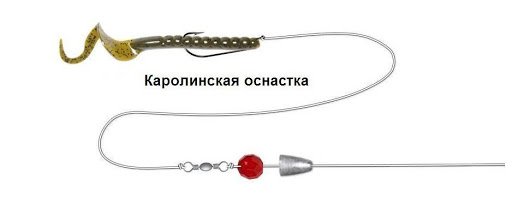
Offset montages
When using offset hooks during jig fishing, not only worms, but also other baits can be used as bait.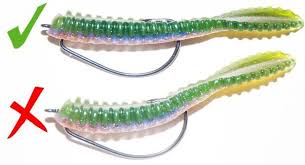

Front hook
In such equipment, to minimize the possibility of snagging, special hooks with jumpers made of plastic are used. The nozzle is attached to a special spiral, which is equipped with a ring. The spiral is put on the very base of the hook used for fishing and is located mainly on the bend. Thanks to this design, this tackle can be attributed to non-hooks, which is mounted directly in front of the nozzle itself.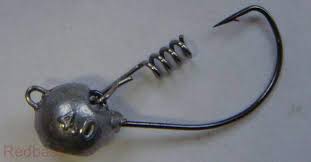
On a note! The baits used with such a jig can be made in the form of a worm or a slug. Thanks to this shape, they are able to freely move through the thickets of algae or grass under water. The forend of the used hook can be additionally equipped with soldering or lead plasticine.
Rigging with wobblers or floats
Most anglers rarely use this rig. By its design, it is a classic jig, to which an ordinary horizontal float or wobbler is attached, thanks to which the angler can independently fix, as well as adjust the depth of immersion of the tackle in the water necessary for catching fish. When using such a tackle, the fish instead of the installed bait often attacks the float itself. Therefore, some anglers, to eliminate such a problem, use a floating wobbler instead of a float, having previously dismantled the tee from the tackle.
Drifting (bottom) gear
As a rule, this type of mounting is actively used by many anglers when fishing in water bodies with the current. On such a tackle, from the bottom of the hook with an attached attachment, a special leash is fixed (the distance from the hook is about 40-60 cm). Sinkers (shot type) are attached to a leash.
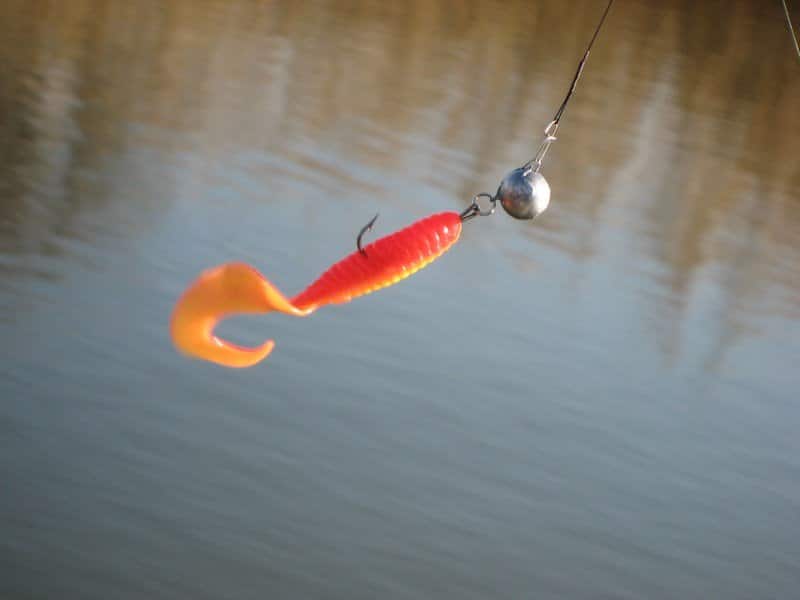
Installation of different jig lures – how to attach and tie a lure on a jig head, hook, double
A beginner spinning player almost always faces the question of how to put a jig head on silicone? After selecting a jig head or other type of weight and equipment option, it is necessary to install the silicone nozzle. There are several different ways of mounting such a tackle, when using which you should first of all take into account the type of hook selected, as well as the type of bait. The simplest and most convenient is the so-called articulated mounting. Thanks to it, the bait used has a more realistic game. In addition, the use of such a mounting design allows the angler to more successfully throw the nozzle upwind over long distances.
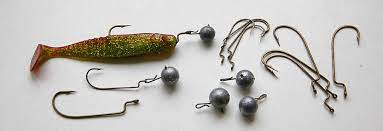
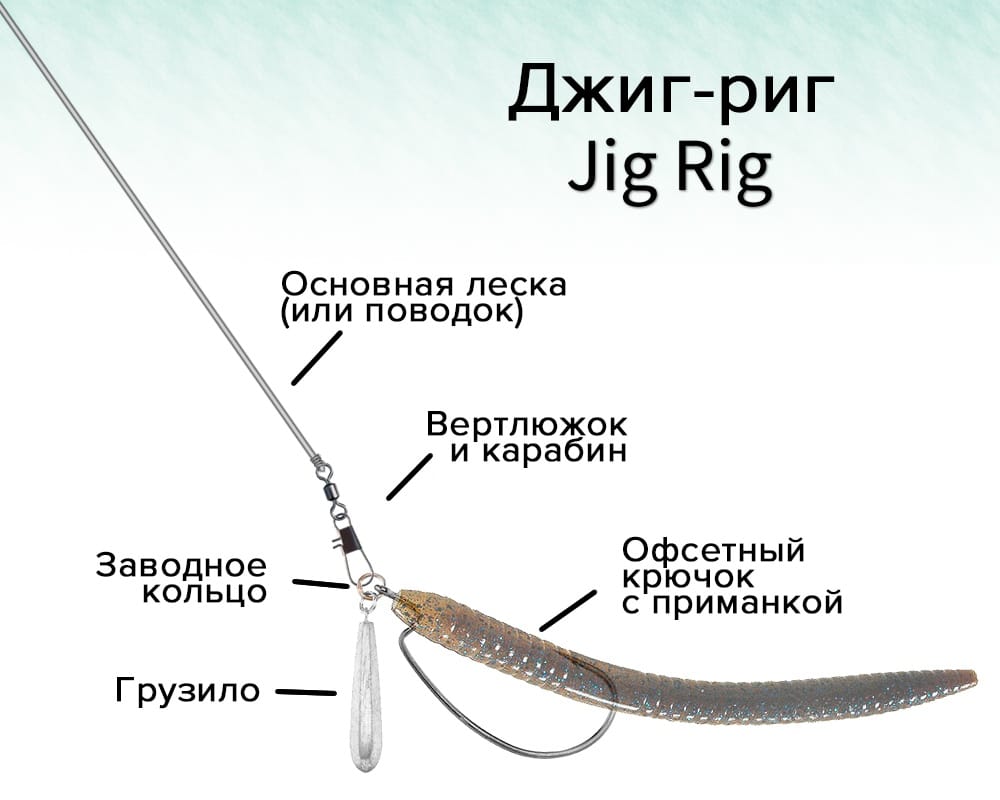
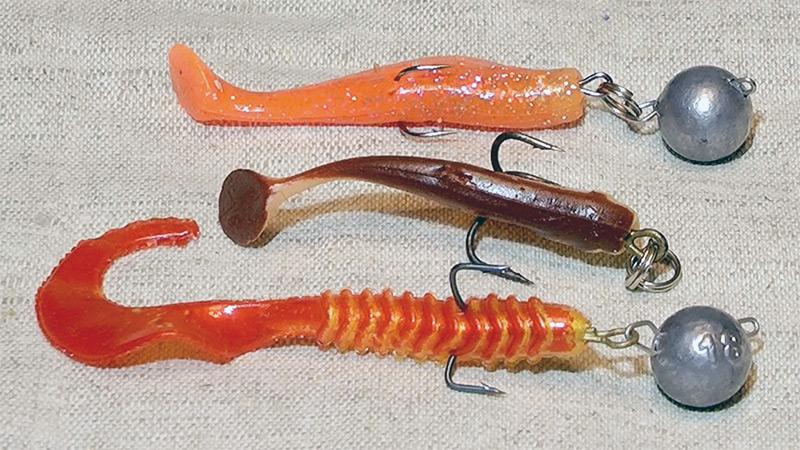


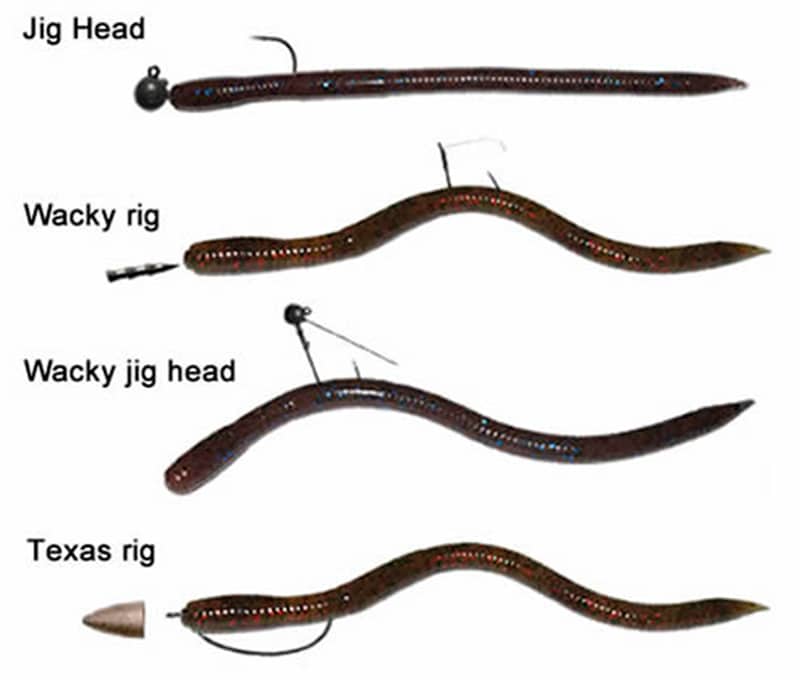
Selection of tackle for using a jig
When fishing for predatory fish with a jig, it is recommended to use spinning rods made of carbon fiber. It is best to use rods that are super fast or fast action. There are two ways to tie a jig head to a fishing line: https://youtu.be/kfvjzftm0Gg When fishing directly from the coastline, it is preferable to use rods that are 2.7 meters or more in length. When fishing from a boat, it is recommended to use small spinning rods, the length of which varies within 2.1-2.4 m. Https://tytkleva.net/lovlya-xishhnoj-ryby/spinning/komplektuyushhie-i-montazh/spinning-dlya- dzhiga.htm It is recommended to equip rods with multiplier and spinning reels. With the proper dexterity, spinners allow you to use baits with any adequate weight. However, it should be borne in mind thatthat too heavy baits can quickly disable even the highest quality spinning reels produced by popular manufacturers.